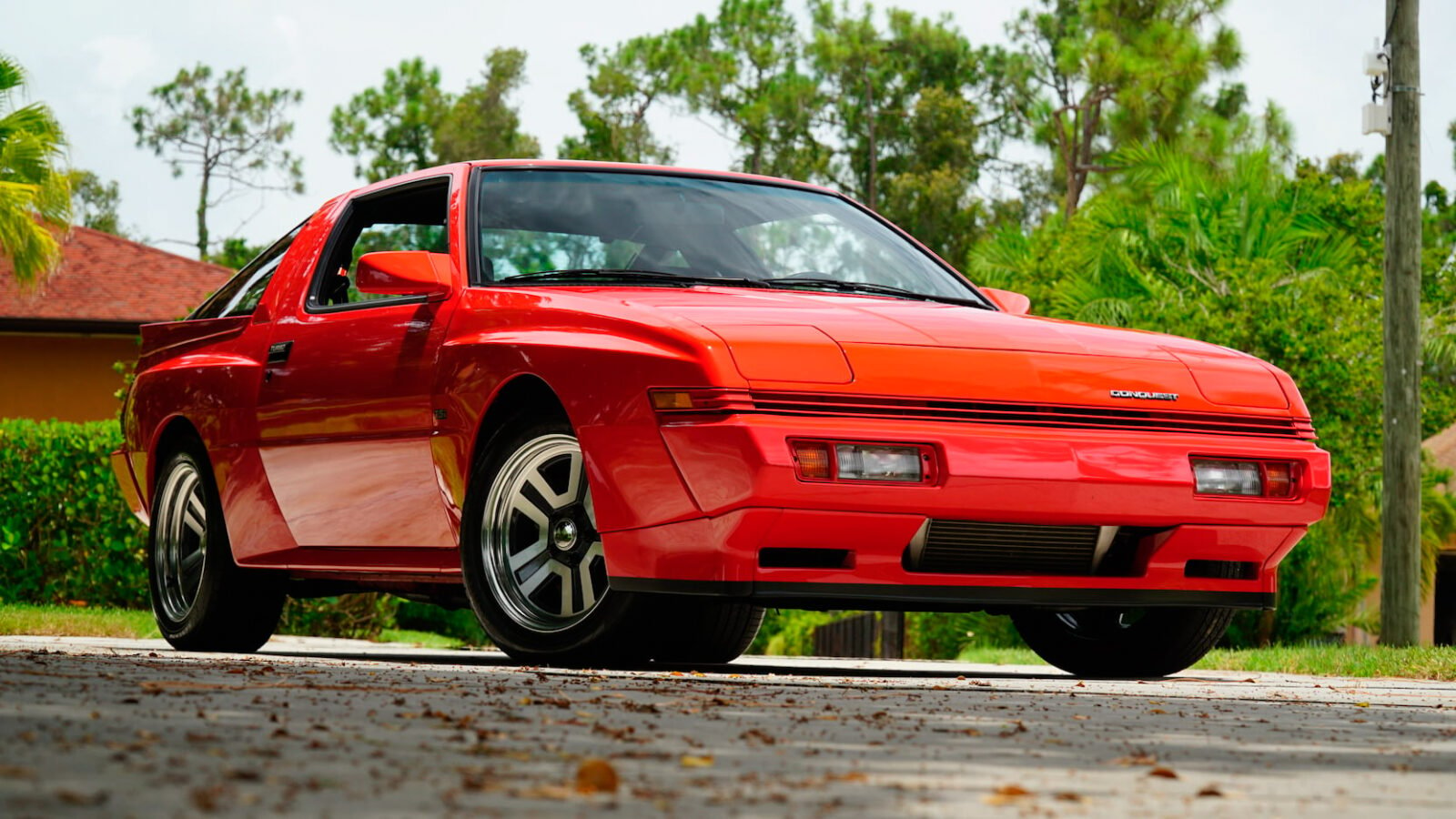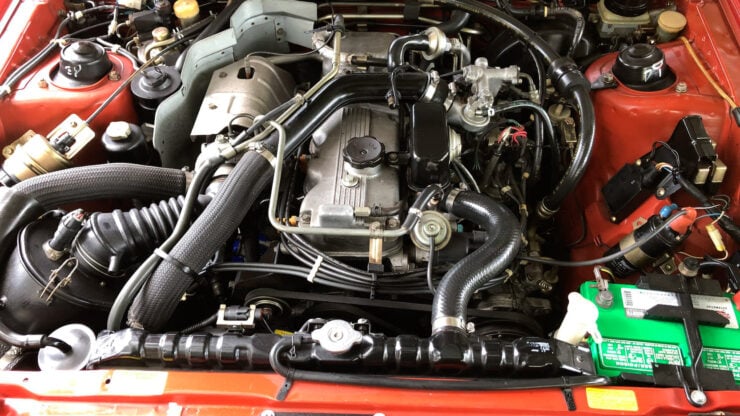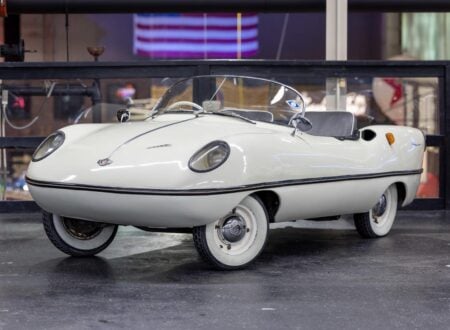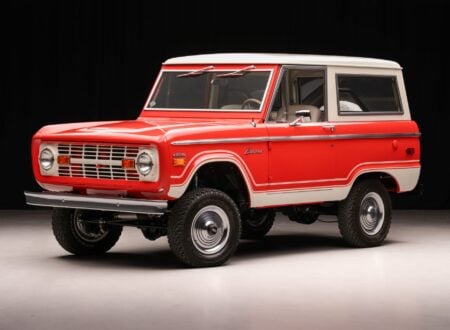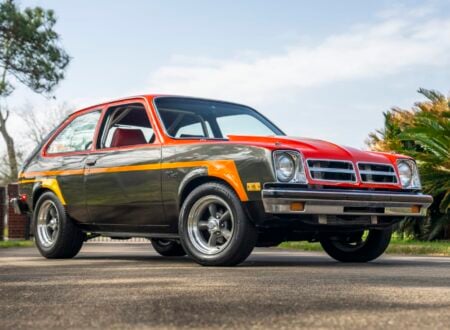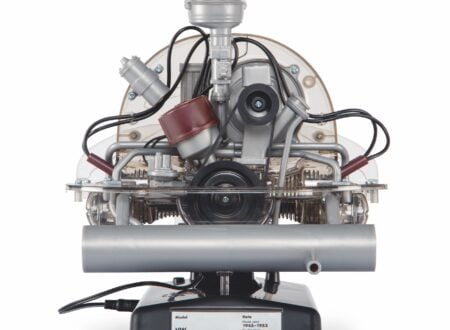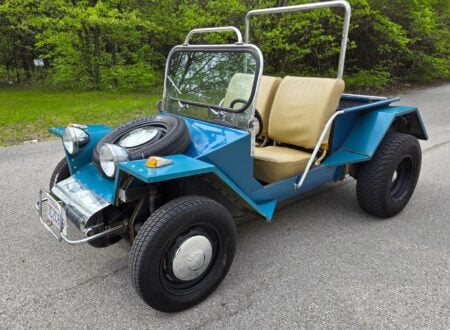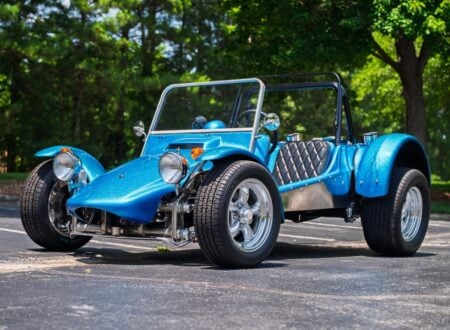The Dodge Conquest TSI is an oft-forgotten Rad-era classic with a combination of good looks and a long list of motorsport victories in the USA, Australia, Europe, Britain, Europe, and across Asia. A 4×4 version even won its class in the 1983 Paris-Dakar Rally.
Though it’s badged as a Dodge the car is actually a Mitsubishi Starion, it was offered as a Dodge, Chrysler, or Plymouth in the US market thanks to a partnership between the Japanese and American automakers.
Fast Facts – Dodge Conquest TSI
- The Dodge Conquest TSI is a badge-engineered version of the wide body, turbocharged Mitsubishi Starion.
- The Starion was a period sales competitor of the Mazda RX-7, Toyota Supra, and the Nissan Z cars. The Mitsubishi never quite achieved the fame or notoriety of its rivals, but it regularly beat them on race tracks around the world.
- The Conquest TSI was sold under the Chrysler, Dodge, and Plymouth badges in the USA from 1984 to 1989.
- The “TSI” designation was for the fuel-injected, turbocharged 2.6 liter, rear wheel drive version of the car with the wide body, producing 188 bhp in factory trim.
The Mighty Mitsubishi Starion
The Mitsubishi Starion is one of the largely unsung GT car heroes of the 1980s, it was one of the first turbocharged performance cars with electronic fuel injection out of Japan, and it proved almost unstoppable on race tracks from Japan and Macau, to Australia and the USA.
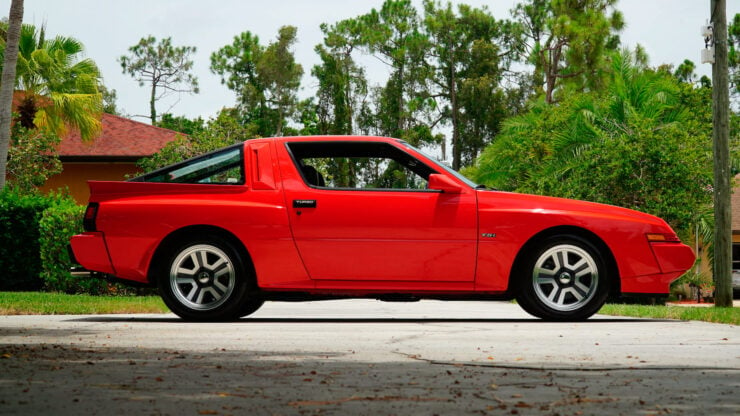

There can be little argument that the Starion is one of the best looking Japanese sports GT cars of its age, the wide body version in particular looks every bit the Japanese challenger to the Porsche 944.
The name “Starion” is a contraction of “Star of Arion,” Mitsubishi have explained that it refers to both a star and the mythical Greek horse of the same name. The horse was said to have been the offspring of Poseidon and Demeter, it was ridden by the hero Heracles into battle during his expedition to Elis.
The four-wheeled version of the Starion had slightly less divine breeding, the steel unibody chassis was a modified version of that used on the earlier Mitsubishi Sapporo and the Mitsubishi Galant Lambda.
Though a four-wheel drive version was developed the vast majority of Starions were rear-wheel drive, with the engine up front in a longitudinal position sending power back through either a 5-speed manual transmission or an optional automatic.
Above Video: This vintage Motor Week review compares the Porsche 944 Turbo, Mitsubishi Starion ESI-R, Mazda RX-7 Turbo, and the Nissan 300ZX Turbo.
A small number of engines were offered however the most common two were the 2.0 liter Mitsubishi G63B engine (offered in both turbo and non-turbo versions) and the 2.6 liter G54B engine with a TD05-12A MHI turbocharger.
It would be this 2.6 liter engine that was used in the North American cars that would receive Dodge, Chrysler, or Plymouth badges.
Ultimately the Starion and its Conquest TSI equivalent would never achieve the legendary fame of cars like the RX-7 or the Supra, but on the bright side this means they’re also typically more affordable when they do come up for sale.
The 1986 Dodge Conquest TSI Shown Here
The car you see here is a 1986 example of the Dodge Conquest TSI, it’s in largely original condition throughout – a rare thing in cars like this that were favored by generations of teenagers due to the lure of the turbo.
As you would expect this car is fitted with the turbocharged 2.6 liter G54B engine which is mated to the 5-speed manual transmission. This car has a red exterior with a black exterior, arguably the best color combination, and it’s riding on restored original staggered 16 inch cast aluminum wheels.
Elsewhere on the car you’ll find an original radio with EQ, dual power mirrors, a power antenna and windows, air conditioning, and a sport steering wheel with stereo controls.
The listing notes that this car has had a recent major service, and it’s due to be offered by Mecum with no reserve in January at the Kissimmee Auction in Florida. If you’d like to read more about it or register to bid you can click here to visit the listing.
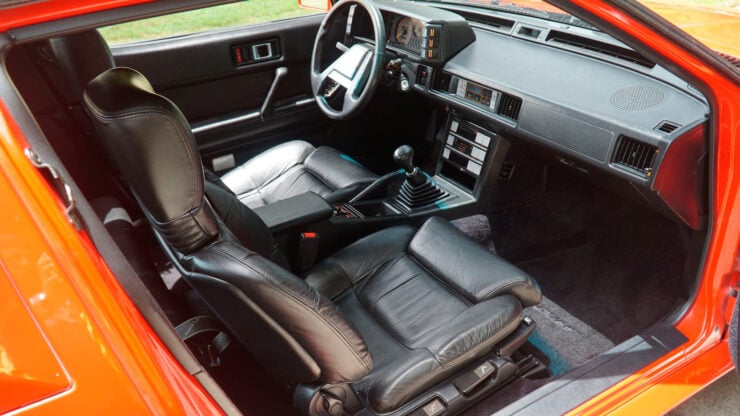
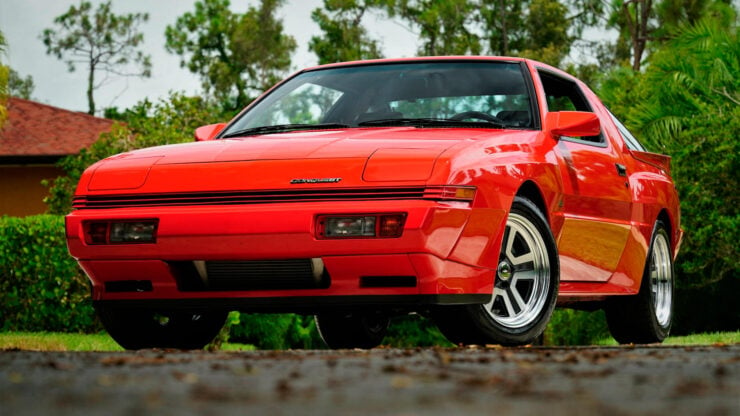
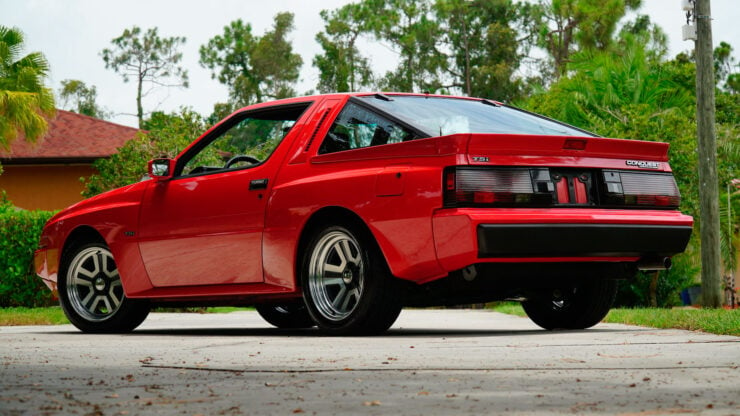
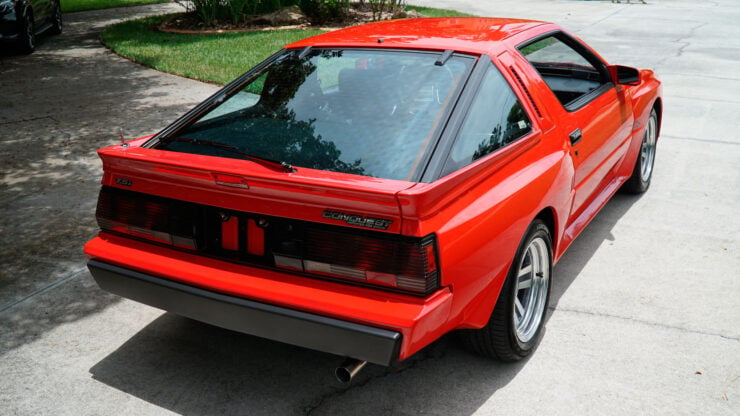
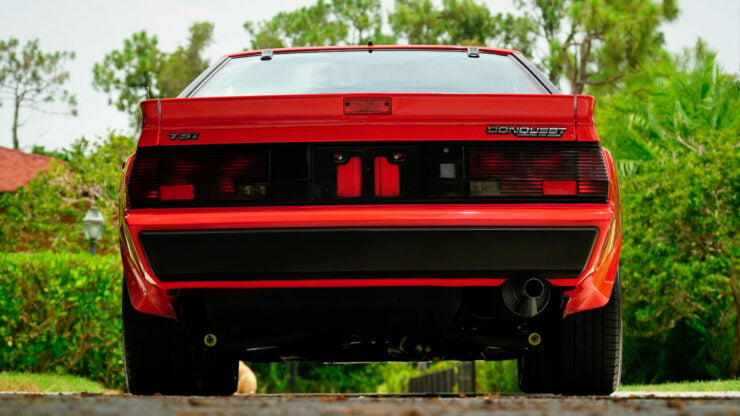
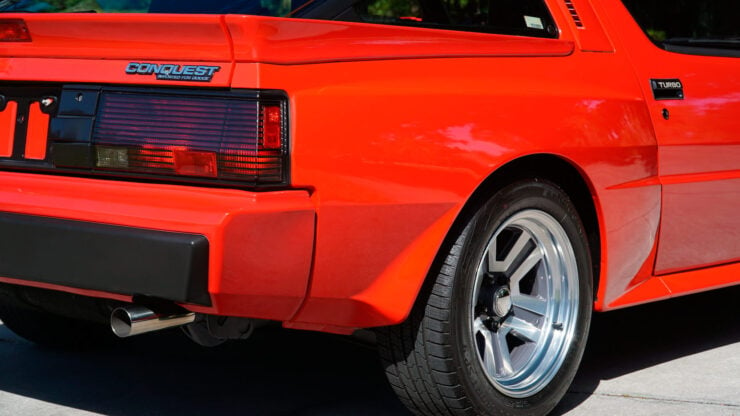
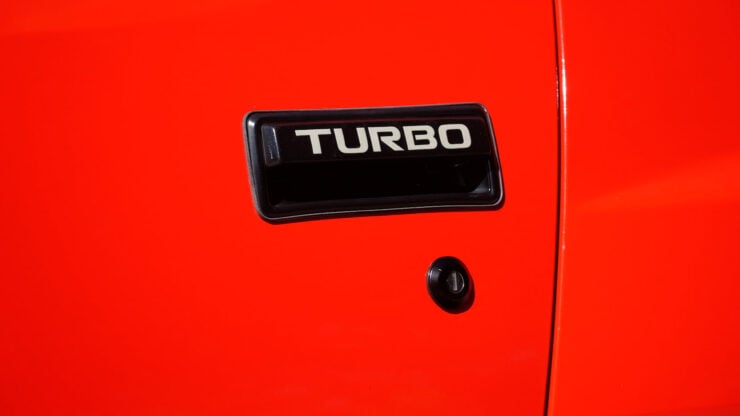
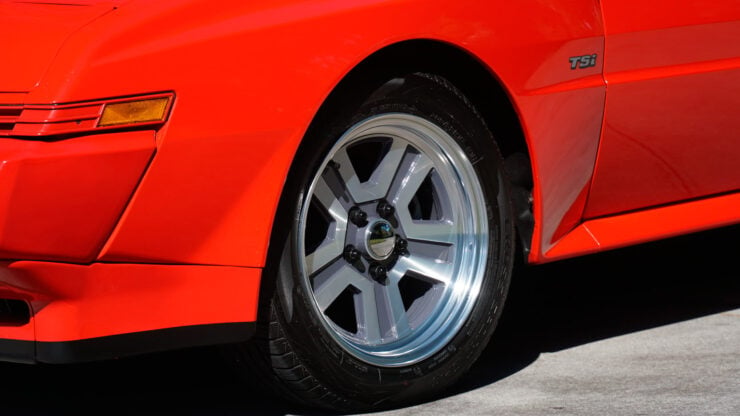
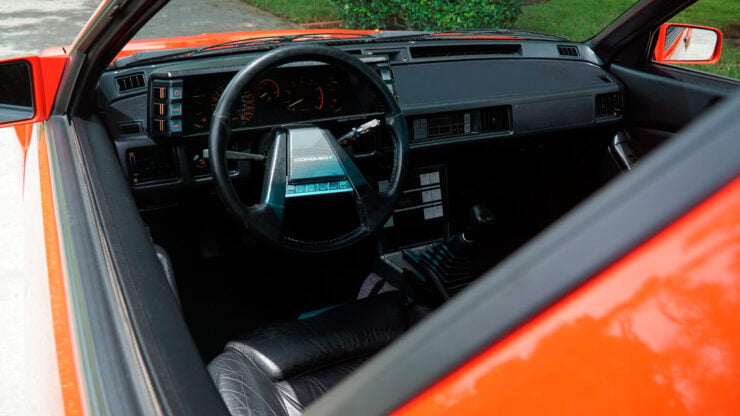
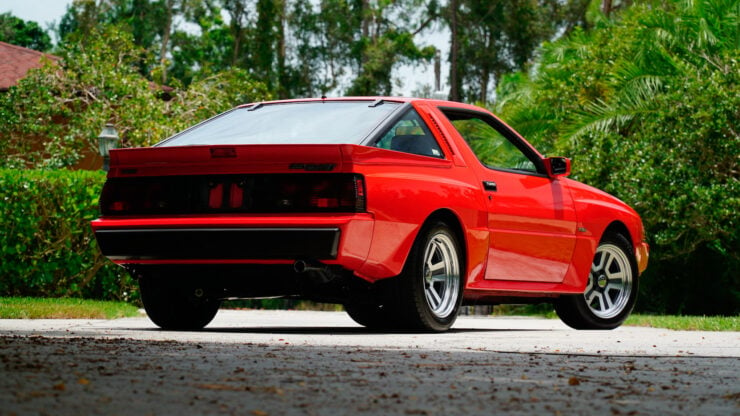
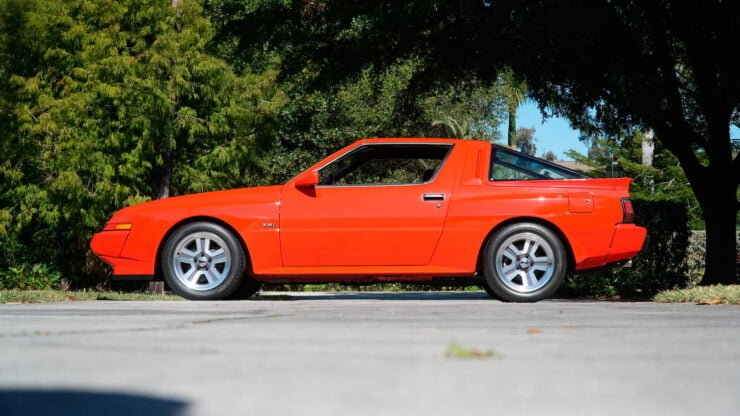
Images courtesy of Mecum

